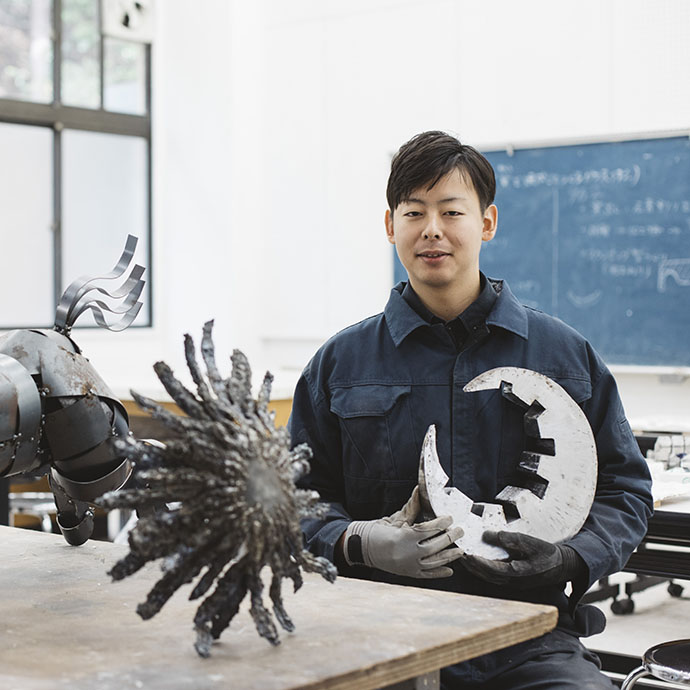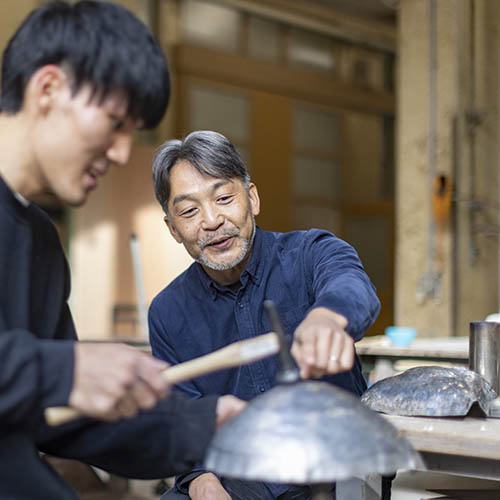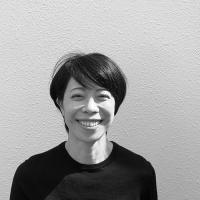
IKAWA Saiko
- Specialization
- Glass Art / Sculpture / Arts & Crafts
[Art Expression / Year 3]
Based on production techniques and knowledge of materials acquired during their second year, students develop the ability to express themselves in their own unique way during their third year of study.To fully express themselves, students need to hone their sensibilities to perceive as much as possible from their everyday experiences.They also need to think theoretically about why they are making art, a process vital to developing concepts for their work.These are the skills that students cultivate through the Art Expression course as they create a study inspired by one of their favorite artists.They first choose an artist they are inspired by, and after in-depth research into the artist and their work, students create a study that they dedicate to the artist.By studying the thought processes and approaches of the artists that they respect, students come to understand themselves as artists and begin to uncover the world they want to express through their art.
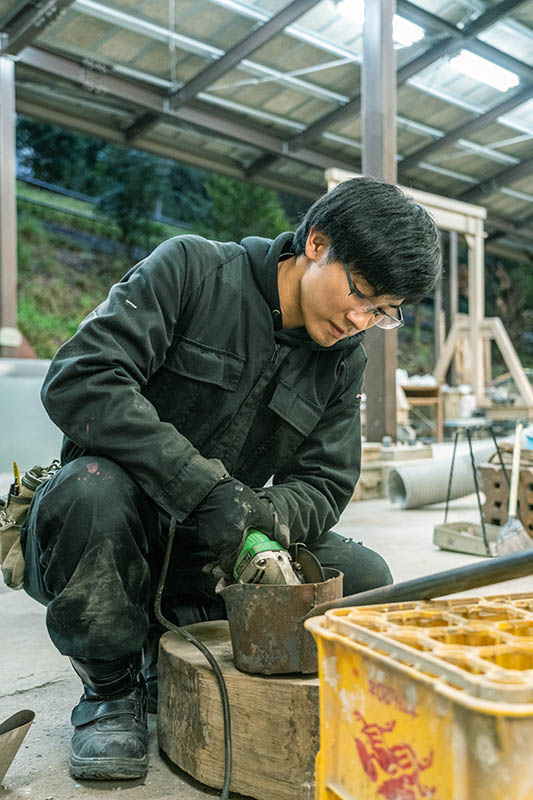
Students take common courses in the Faculty of Fine Arts to develop their foundations as artists and creators, including the ability to observe, think, and imagine.They also learn the basics across all seven courses and start to explore which fields they would like to pursue.
Students first create sculptures with pliable materials such as clay and use the human body as a motif to learn the basics of material processing, including bronze casting, metal sculpture, wood carving, and stone carving, which they use to explore their own artistic themes and means of expression.
Students study art theory, acquire the ability to look at art objectively, try their hand at planning and organizing an exhibition, and create artworks with an awareness of the outside world.
Students engage in their graduation work, making full use of the skills and expressive vocabulary they have developed over the past four years of study.While discovering their own originality and means of expression, students complete the final work of their student careers.
Our workshops are equipped with machinery that includes cranes and forklifts.
PICK UP!
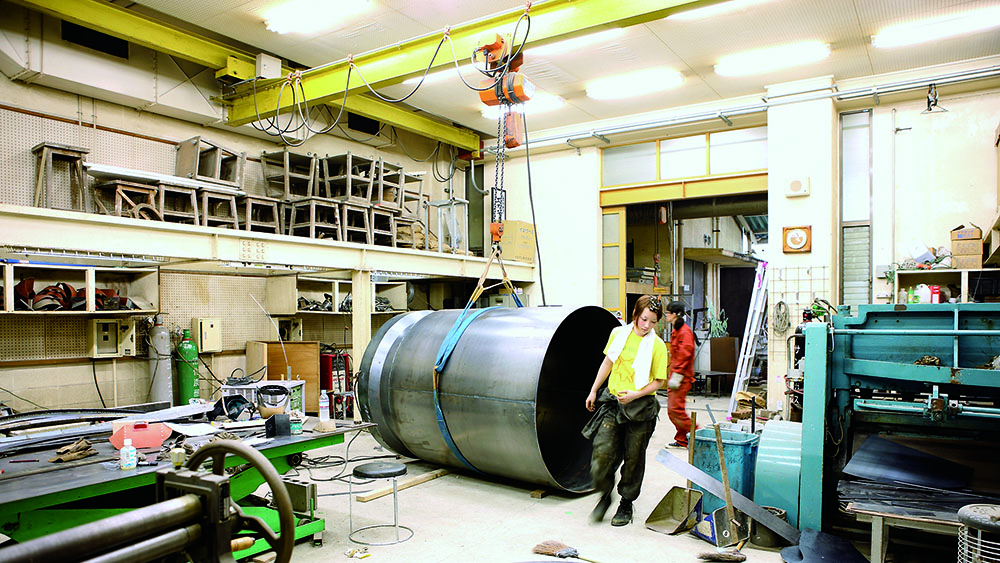
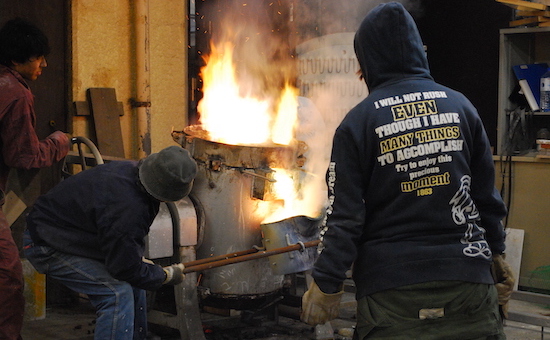
We also have a tilting furnace for casting bronze and other materials.
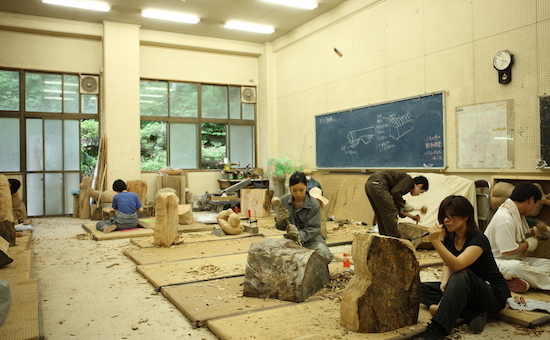
Students work with wood during one of their classes.They also handle a variety of other materials, including stone and metal.
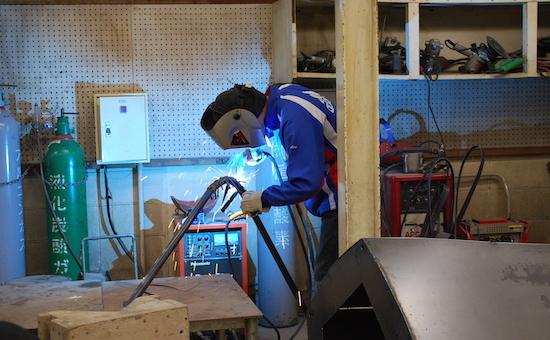
In the Mixed Media Studio, students create works by combining various materials, including resin.
